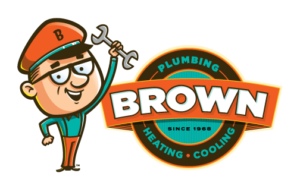Energy Savings Tips for the Fall & Winter Months
This article will help you find strategies to help you save energy during the cool fall and cold winter months. Some of the tips below are free and can be used on a daily basis to increase your savings; others are simple and inexpensive actions you can take to ensure maximum savings through the winter. COVER DRAFTY WINDOWS • Use a heavy-duty, clear plastic sheet on a frame or tape clear plastic film to the inside of your window frames during the cold winter months. Make sure the plastic is sealed tightly to the frame to help reduce infiltration. • Install tight-fitting, insulating drapes or shades on windows that feel drafty after weatherizing. ADJUST THE TEMPERATURE • When you are home and awake, set your thermostat as low as is comfortable. • When you are asleep or out of the house, turn your thermostat back 10° to 15° for eight hours and save around 10% a year on your heating and cooling bills. FIND AND SEAL LEAKS • Seal the air leaks around utility cut-throughs for pipes (“plumbing penetrations”), gaps around chimneys and recessed lights in insulated ceilings, and unfinished spaces behind cupboards and closets. • Add caulk or weatherstripping to seal air leaks around leaky doors and windows. MAINTAIN YOUR HEATING SYSTEMS • Schedule service for your heating system. Find out what maintenance is required to keep your heating system operating efficiently. • Furnaces: Replace your furnace filter once a month or as needed. • Wood- and Pellet-Burning Heaters: Clean the flue vent regularly and clean the inside of the appliance with a wire brush periodically to ensure that your home is heated efficiently. REDUCE HEAT LOSS FROM THE FIREPLACE • Keep your fireplace damper closed unless a fire is burning. Keeping the damper open is like keeping a window wide open during the winter; it allows warm air to go right up the chimney. • When you use the fireplace, reduce heat loss by opening dampers in the bottom of the firebox (if provided) or open the nearest window slightly–approximately 1 inch–and close doors leading into the room. Lower the thermostat setting to between 50° and 55°F. • If you never use your fireplace, plug and seal the chimney flue. • If you do use the fireplace, install tempered glass doors and a heat-air exchange system that blows warmed air back into the room. • Check the seal on the fireplace flue damper and make it as snug as possible. • Purchase grates made of C-shaped metal tubes to draw cool room air into the fireplace and circulate warm air back into the room. • Add caulking around the fireplace hearth. LOWER YOUR WATER HEATING COSTS Water heating accounts for about 18% of the energy consumed in your home. • Turn down the temperature of your water heater to the warm setting (120°F). You’ll not only save energy, you’ll avoid scalding your hands. LOWER YOUR HOLIDAY LIGHTING COSTS • Use light-emitting diode — or “LED” — holiday light strings to reduce the cost of decorating your home for the winter holidays. Source: http://www.energy.gov
